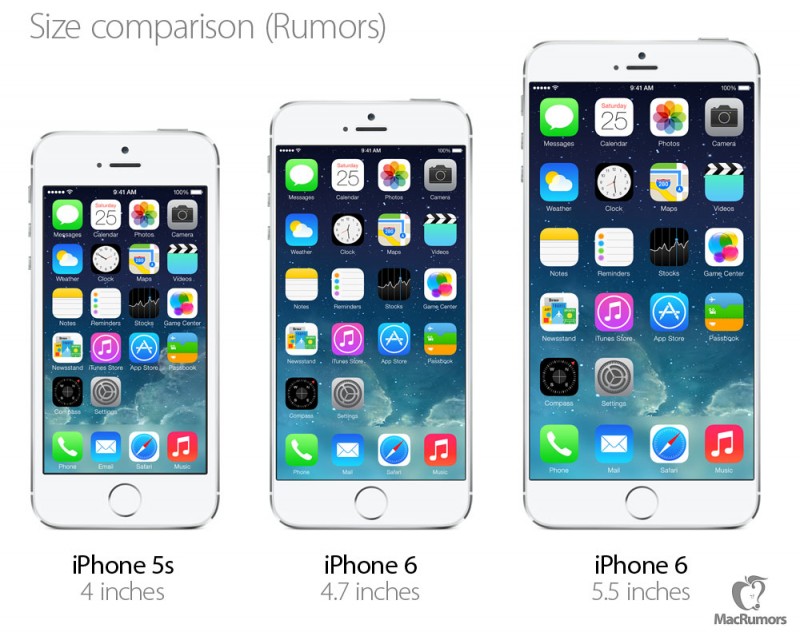Production on screens for the 4.7-inch version of Apple’s next iPhone could start as early as May, according to a new report from Reuters. Citing supply chain sources, the outlet says that Japan Display and other manufacturers are readying their facilities and could begin churning out panels next month.
Unfortunately, for those looking forward to the oft-rumored 5.5-inch model, it sounds like production issues have forced Apple to delay the handset. Reuters says that manufacturers are running into difficulties with in-cell technology, and the larger displays may not go into production for several months…
Here’s Reuters’ Reiji Murai with more:
“Apple Inc suppliers will begin mass producing displays as early as May for the next iPhone, expected to be launched this autumn, with a 4.7-inch screen likely to be produced first while a 5.5-inch version could be delayed, supply chain sources said. […]
Both iPhone 6 screens are expected to use in-cell touch panel technology – built into the screen and allowing for thinner construction than with standard touch panel films – that was introduced with the iPhone 5, the sources said.
But due to difficulties with in-cell production technology for the larger 5.5-inch size, one of the sources said, a decision was made to begin mass production with the 4.7-inch version alone.
The outlet reaffirms that Japan Display Inc, Sharp Corp and South Korea’s LG Display Co Ltd have all been tapped to make the screens—something we’ve heard in a number of reports. Japan Display will be the first to start production, at its main plant in Mobara, in May, with the others ramping up in June.

Last week, Japan’s reliable Nikkei news outlet reported that Apple would be launching both 4.7-inch and 5.5-inch iPhone models in September. It also named the above 3 suppliers as next-gen display manufactures, and noted that the panels would be of higher resolution than Apple’s current-gen handsets.
